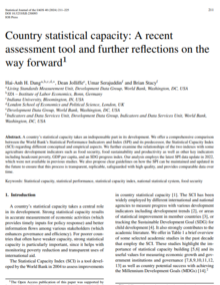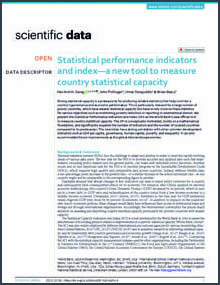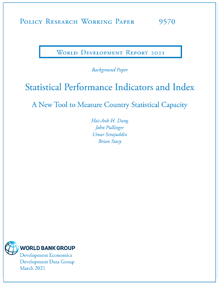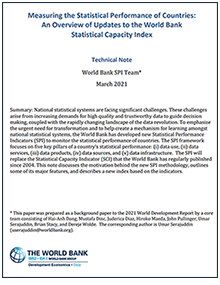New SPI data: Seven charts to understand the performance of national statistical systems around the world
JANUARY 18, 2024
Applications of the Statistical Performance Indicators (SPI)
FEBRUARY 17, 2022
Statistics about statistics: How do we measure statistical performance?
OCTOBER 19, 2021
Not all data are created equal: why the adoption of international data standards pays off
SEPTEMBER 01, 2021
Are we there yet? Many countries don't report progress on all SDGs according to the World Bank's new Statistical Performance Indicators
AUGUST 10, 2021
The Statistical Performance Indicators: A Fresh Way to Gauge a Nation’s Statistical Performance
MAY 14, 2021
The Statistical Performance Indicators: A new tool to measure the performance of national statistical systems
MARCH 31, 2021
Measuring the statistical capacity of nations
FEBRUARY 5, 2019





